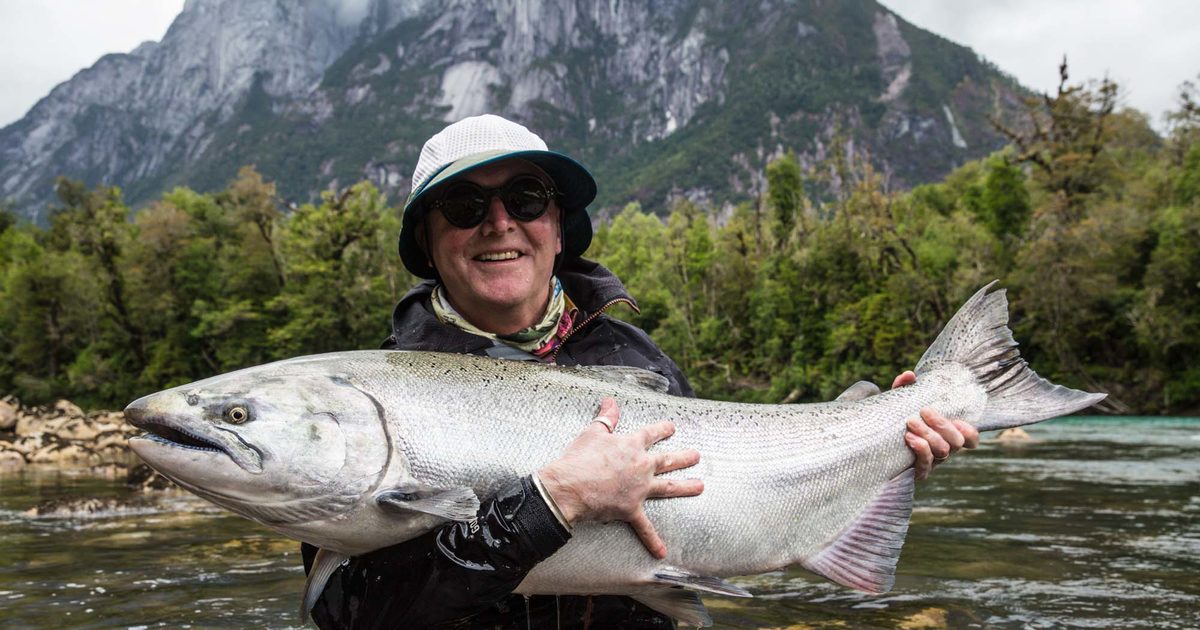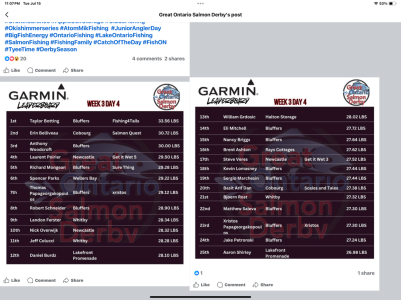Sharphooks
Well-Known Member
https://www.theguardian.com/environment/2025/jun/25/cod-shrinking-size-overfishing-study
I’m guessing that anybody who frequents this site who has had a few years of Central Coast (Rivers etc) and North Coast under their belt will have noticed the drop-off in size of the July and August springs. Tyees used to be an expected size grade during those months with maybe a 40 or a 50 if you put in enough hours. Sooner or later you’d get your slab.
But for the last few seasons, based on my experience and anecdotal reports from friends, a mid-20 spring is now reason to celebrate…..and you have to weed through lots of teeners to raise your glass to even that size spring.
I used to think it was environmental reasons—- more competition for feed from hatchery fish navigating the same Pacific gyre as the wild fish. Warming trends in the top layers of water with the subtle changes of dissolved oxygen and decreased Ph etc etc that might effect fitness.
But the study conducted on Barents Sea Atlantic cod seems to throw in another genetic component that might not be quite so obvious—-weeding the larger springs out of the gene pool with rod and reel with the resulting overall decrease in size of the fish we release and leave to spawn.
A decade ago I put a 60+ into my boat. When giving that fish the wood shampoo I vowed I’d never do it again. The main (selfish) reason —-trying to deal with that much fish in a small boat during an extended trip tended pretty much put an end to the trip. But there was also that nagging suspicion that I was removing some valuable genetic stuff from the pool.
To this day, I haven’t had the opportunity to make that same decision on whether or not to keep a slab like that one particular fish, though since that slab a decade ago I have cut loose fish 35+/- just because they came too early in the trip. However, in the last few years, I’ve been content just to get a mid-twenty spring….
Now, after reading that Barents SEa study, I’ll have a bit more reason to walk the straight and narrow with C&R when seeing a large wild fish lolling in the water at the gunnel of my boat like that fish a decade ago…..and it would no doubt be a huge bonus, privilege ( and surprise) to even have the opportunity to make the decision to release a fish that size…
I’m guessing that anybody who frequents this site who has had a few years of Central Coast (Rivers etc) and North Coast under their belt will have noticed the drop-off in size of the July and August springs. Tyees used to be an expected size grade during those months with maybe a 40 or a 50 if you put in enough hours. Sooner or later you’d get your slab.
But for the last few seasons, based on my experience and anecdotal reports from friends, a mid-20 spring is now reason to celebrate…..and you have to weed through lots of teeners to raise your glass to even that size spring.
I used to think it was environmental reasons—- more competition for feed from hatchery fish navigating the same Pacific gyre as the wild fish. Warming trends in the top layers of water with the subtle changes of dissolved oxygen and decreased Ph etc etc that might effect fitness.
But the study conducted on Barents Sea Atlantic cod seems to throw in another genetic component that might not be quite so obvious—-weeding the larger springs out of the gene pool with rod and reel with the resulting overall decrease in size of the fish we release and leave to spawn.
A decade ago I put a 60+ into my boat. When giving that fish the wood shampoo I vowed I’d never do it again. The main (selfish) reason —-trying to deal with that much fish in a small boat during an extended trip tended pretty much put an end to the trip. But there was also that nagging suspicion that I was removing some valuable genetic stuff from the pool.
To this day, I haven’t had the opportunity to make that same decision on whether or not to keep a slab like that one particular fish, though since that slab a decade ago I have cut loose fish 35+/- just because they came too early in the trip. However, in the last few years, I’ve been content just to get a mid-twenty spring….
Now, after reading that Barents SEa study, I’ll have a bit more reason to walk the straight and narrow with C&R when seeing a large wild fish lolling in the water at the gunnel of my boat like that fish a decade ago…..and it would no doubt be a huge bonus, privilege ( and surprise) to even have the opportunity to make the decision to release a fish that size…
Last edited:




